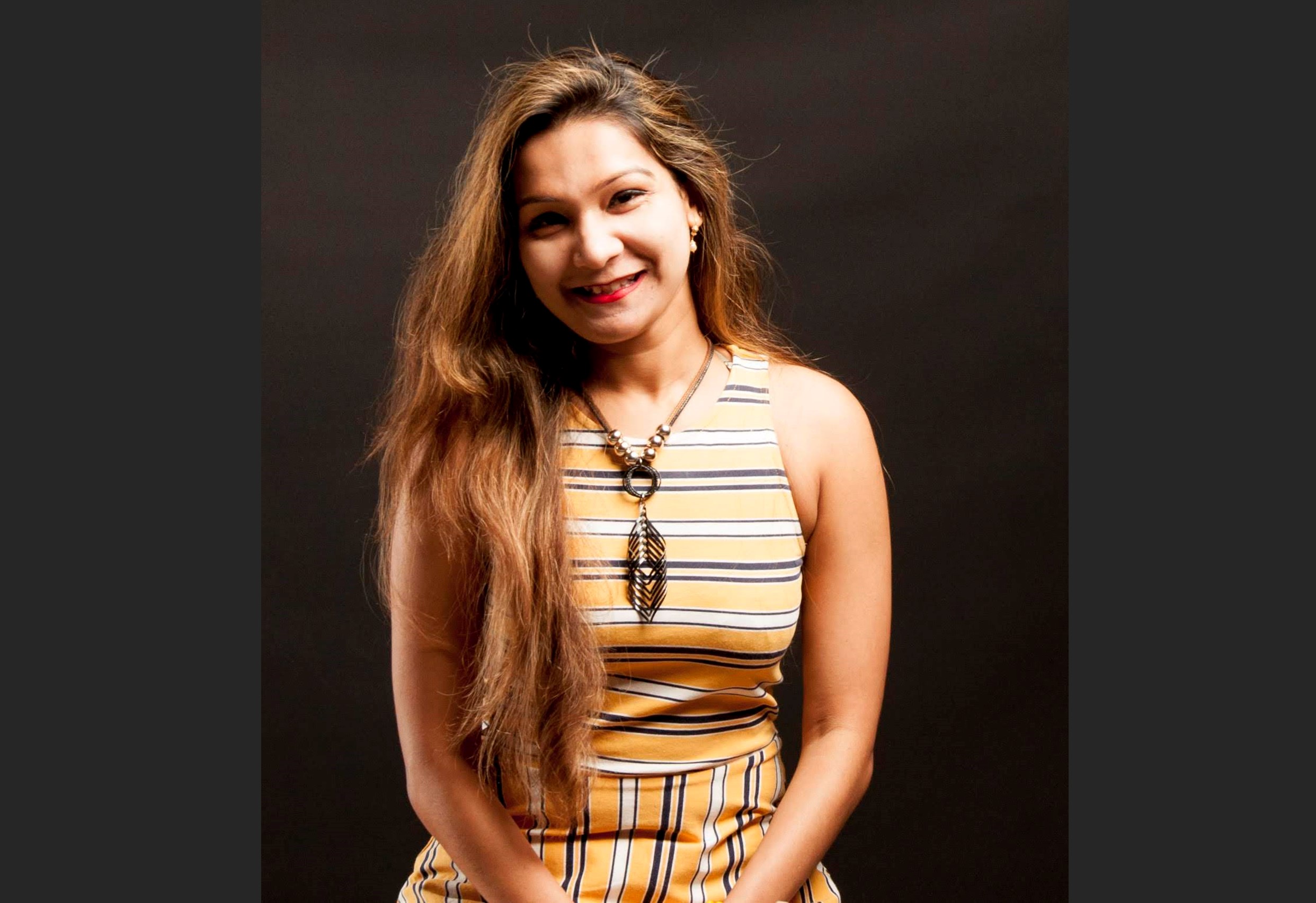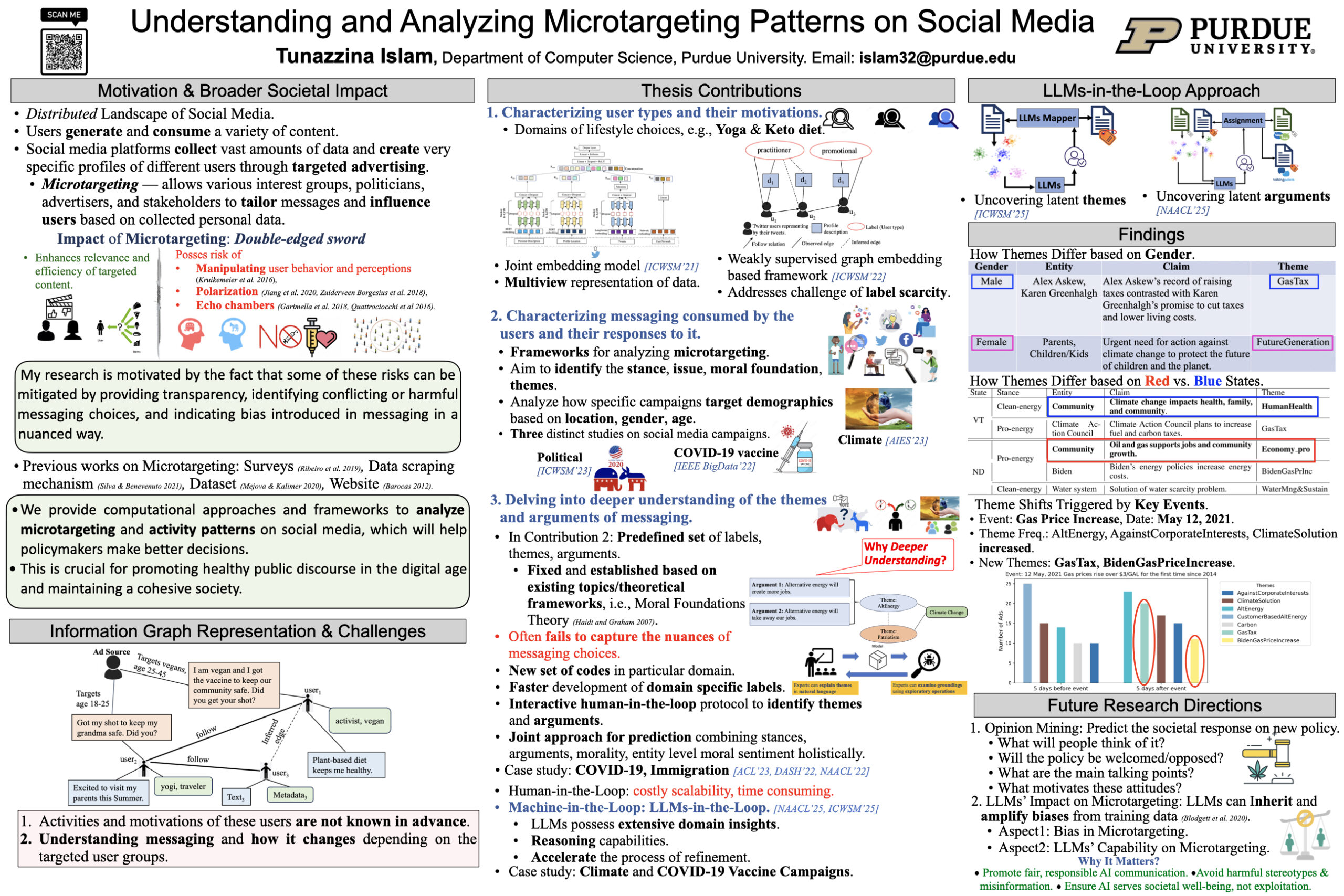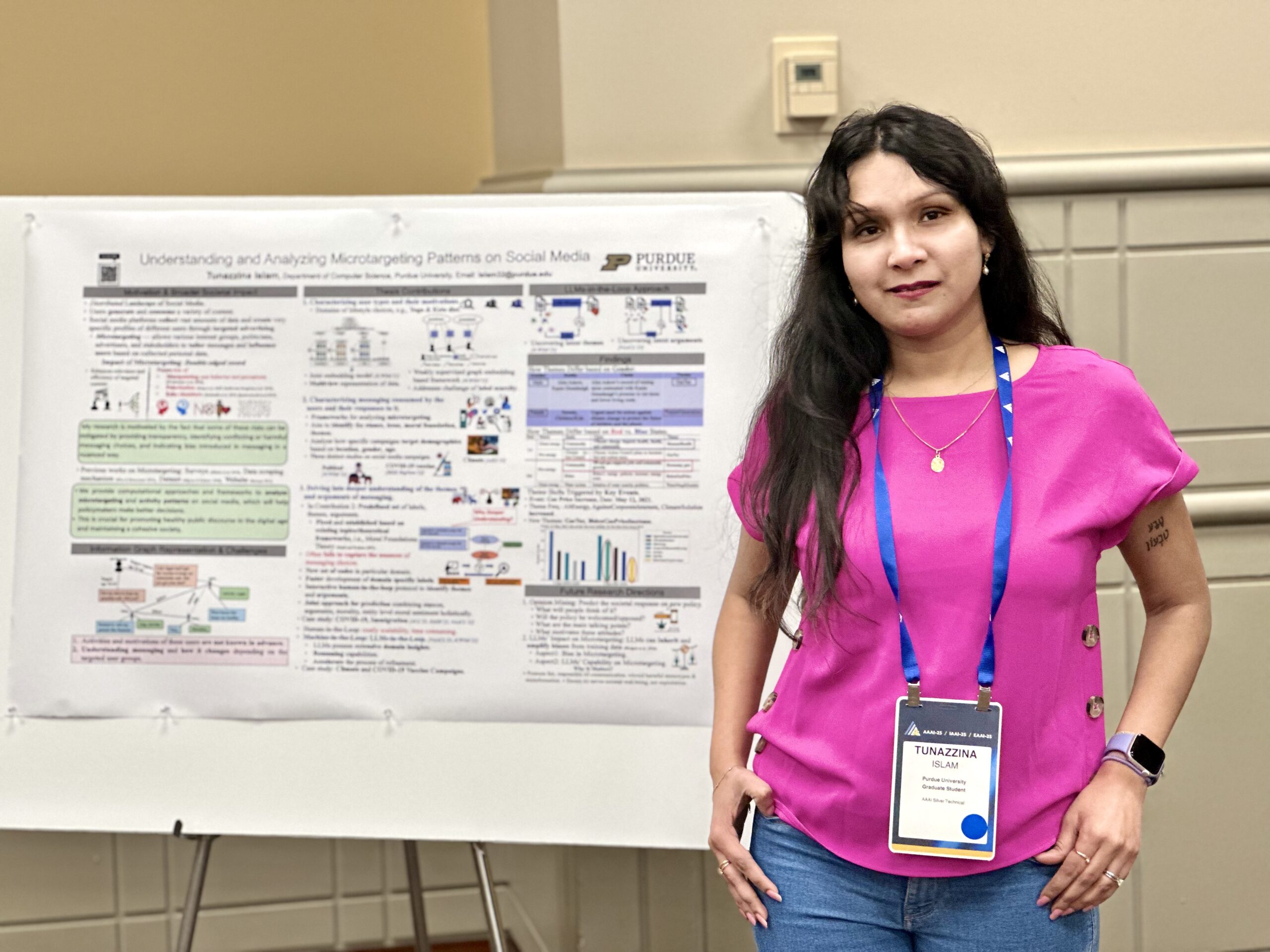
In this interview series, we’re meeting some of the AAAI/SIGAI Doctoral Consortium participants to find out more about their research. The Doctoral Consortium provides an opportunity for a group of PhD students to discuss and explore their research interests and career objectives in an interdisciplinary workshop together with a panel of established researchers.
In the third of our interviews with the 2025 cohort, we heard from Tunazzina Islam who has recently completed her PhD in Computer Science at Purdue University, advised by Dr Dan Goldwasser. Her primary research interests lie in computational social science (CSS), natural language processing (NLP), and social media mining and analysis.
Could you give us an overview of the research you carried out during your PhD?
We now live in a world where we can reach people directly through social media, without relying on traditional media such as television and radio. On the other hand, social media platforms collect vast amounts of data and create very specific profiles of different users through targeted advertising. Various interest groups, including politicians, advertisers, and stakeholders, utilize these platforms to target potential users to advance their interests by adapting their messaging. This process, known as microtargeting, relies on data-driven techniques that exploit the rich information collected by social networks about their users. I am giving an example of microtargeting on COVID-19 vaccine topic: The same ad source, when targeting the older population, emphasizes the message “vaccine passport is oppression”. Conversely, while targeting women of reproductive age, it claims “vaccine is dangerous for pregnant women”. The same ad source tailors its messaging based on different demographics.
Microtargeting is a double-edged sword. It enhances the relevance and efficiency of targeted content and can influence people to take action based on personal beliefs. On the one hand, this could be great in increasing the relevance based on users to help guide people in making better health decisions and offering them opportunities for career growth. On the other hand, it can manipulate people to make decisions against their own interests, foster echo chambers, and increase polarization.
My research is motivated by the fact that some of these risks can be mitigated by providing transparency, identifying conflicting or harmful messaging choices, and indicating bias introduced in messaging in a nuanced way. My research vision is to understand microtargeting and activity patterns on social media by developing computational approaches and frameworks blending computational social science (CSS), natural language processing (NLP), and artificial intelligence (AI).
A significant challenge lies in understanding the messaging and how it changes depending on the targeted user groups. Another challenge arises when we do not know who the users are and what their motivations are for engaging with content. My research is driven by characterizing users and messaging on social media. I address the challenges by developing computational approaches for (1) characterizing user types and their motivations for engaging with content [ICWSM’22, ICWSM’21, ICSC’21, IEEE BigData’20], (2) analyzing the messaging based on topics relevant to the users and their responses to it [ICWSM’23, AIES’23, IEEE BigData’22], and (3) delving into the deeper understanding of the themes and arguments involved in the content [NAACL’25, ICWSM’25, ACL’23, NAACL’22, DaSH’22]
 Tunazzina’s poster at the 2025 AAAI/SIGAI Doctoral Consortium.
Tunazzina’s poster at the 2025 AAAI/SIGAI Doctoral Consortium.
Is there an aspect of your research that has been particularly interesting?
One particularly interesting aspect of my research is uncovering how messaging strategies adapt to different user groups and the implications this has for public opinion and decision-making. The way that the same source can craft vastly different narratives for distinct audiences is both fascinating and concerning. For example, in the case of COVID-19 vaccine-related messaging, seeing how the same entity tailors its argument—framing the vaccine as an oppressive mandate for older populations while portraying it as a health risk for pregnant women—highlights the power and potential risks of microtargeting.
From a methodological perspective, developing computational techniques that blend NLP+CSS to detect nuanced messaging patterns is intellectually stimulating. It involves not only identifying what is being said but also contextualizing it within larger narratives and understanding the strategic intent behind different messaging styles. These insights can be used to enhance transparency in online communication, mitigate harmful effects of microtargeting, and develop interventions that promote more balanced and informed public discourse.
Overall, what makes my research particularly interesting is its real-world relevance—unpacking how digital communication shapes public perception and decision-making, and exploring ways to ensure these processes are more transparent.
My PhD thesis proposal won a best poster award at the 2025 AAAI/SIGAI Doctoral Consortium.
 Tunazzina receiving the best poster award.
Tunazzina receiving the best poster award.
What are your plans for building on your research during the PhD – what aspects will you be investigating next?
A major challenge is understanding the harmful effects of messaging choices when it comes to reinforcing bias and stereotypes. Doing that requires us to scale up this analysis and adapt to ongoing continuous changing messaging; large language models (LLMs) provide us an opportunity to reason about it and deal with how this analysis can scale up. Currently, I am working on leveraging LLMs to analyze societal opinions, biases in microtargeting to ensure equitable digital practices, and foster human-AI collaboration in complex psycho-linguistic tasks, i.e., identifying morality frame on vaccine debate [ACM WebSci’25], create AI-driven insights that inform policymaking and promote positive societal change. This integrated approach ensures that artificial intelligence (AI) serves as a catalyst for understanding and improving human experiences within diverse social contexts. My future research will utilize advanced AI technologies to bridge the gap between societal needs and technological solutions.
What made you want to study NLP, and in particular the application to computational social science and social media analysis?
My interest in NLP, CSS and social media mining stemmed from a deep curiosity about how language shapes human interactions and influences societal outcomes. Additionally, I was drawn to the interdisciplinary nature of computational social science as it allows for the integration of AI and machine learning with theories from psychology, sociology, and political science.
The rise of social media as a dominant communication platform has fundamentally changed how information spreads, how people form opinions, and how different interest groups engage with the public. Unlike traditional media, where messaging is largely uniform, social media allows for highly personalized and dynamic communication. This intrigued me, as it introduced both opportunities and challenges—on one hand, enabling more relevant and targeted content, but on the other, increasing the risk of manipulation, misinformation, and polarization. Witnessing the growing role of data-driven messaging in shaping public discourse, I became interested in developing computational methods to better understand and analyze these dynamics.
What advice would you give to someone thinking of doing a PhD in the field?
A PhD is not a sprint; it’s a marathon. There will be many paper rejections, ideas that don’t work, and phases where you feel stuck for a long time. Some research questions will be harder to formulate than others, but my advice is simple: hang in there—don’t give up. Keep communicating with your advisor, stay engaged by reading papers, and actively discuss your ideas. Attend conferences, workshops, and tutorials to broaden your perspective. Seek support from your peers and colleagues—it’s a journey best navigated with a strong network.
Could you tell us an interesting (non-AI related) fact about you?
An interesting (and deeply personal) fact about me is that I became a mom of two during my PhD journey! My daughter was born in 2021, and my son was born in 2023. Balancing a PhD while navigating two pregnancies, two childbirths, and the challenges of raising young children—alongside my husband, who was also a PhD student back then—was an incredibly demanding yet rewarding experience. Adding to the complexity, this all happened during a global pandemic. This journey has given me a profound appreciation for resilience, time management, and the strength of academic parents. It’s been challenging, but also a testament to perseverance and passion!
I am a first-generation PhD, yogi, and travel enthusiast.
 Tunazzina with her poster at AAAI 2025.
Tunazzina with her poster at AAAI 2025.
About Tunazzina
Tunazzina Islam has recently completed her PhD in Computer Science from Purdue University. She was advised by Dr Dan Goldwasser. Her research vision is to understand microtargeting and activity patterns on social media by developing computational approaches and frameworks blending computational social science (CSS), natural language processing (NLP), and artificial intelligence (AI). Her work has been recognized by her publications in prominent conferences including AAAI ICWSM, NAACL, ACL, AIES, ACM WebSci, IEEE BigData, and awards (Purdue Graduate School Summer Research Grant: 3 times). Her PhD thesis proposal was accepted at the AAAI-25 Doctoral Consortium where she won the best poster award. Beyond research, she has nine years of teaching experience in various roles such as teaching assistant, guest lecturer, mentor, and trainer. For her teaching contributions, she received the Graduate Teaching Award from Purdue CS Department. To support the CSS research community, she became an ICWSM ambassador, introducing the conference to interested researchers and individuals from underrepresented groups. She has served as Tutorial Co-chair of ICWSM 2025 and Associate Chair for CSCW 2024, CSCW 2025. Additionally, she has been a reviewer for numerous NLP, CSS, HCI, and AI conferences and workshops since 2020. She organized a tutorial on “Analyzing Microtargeting on Social Media” at 2024 Academic Data Science Alliance (ADSA) Annual Meeting. She also served as a Vice President of the Computer Science Graduate Student Association (CSGSA), Purdue University, from 2022 to 2023.

